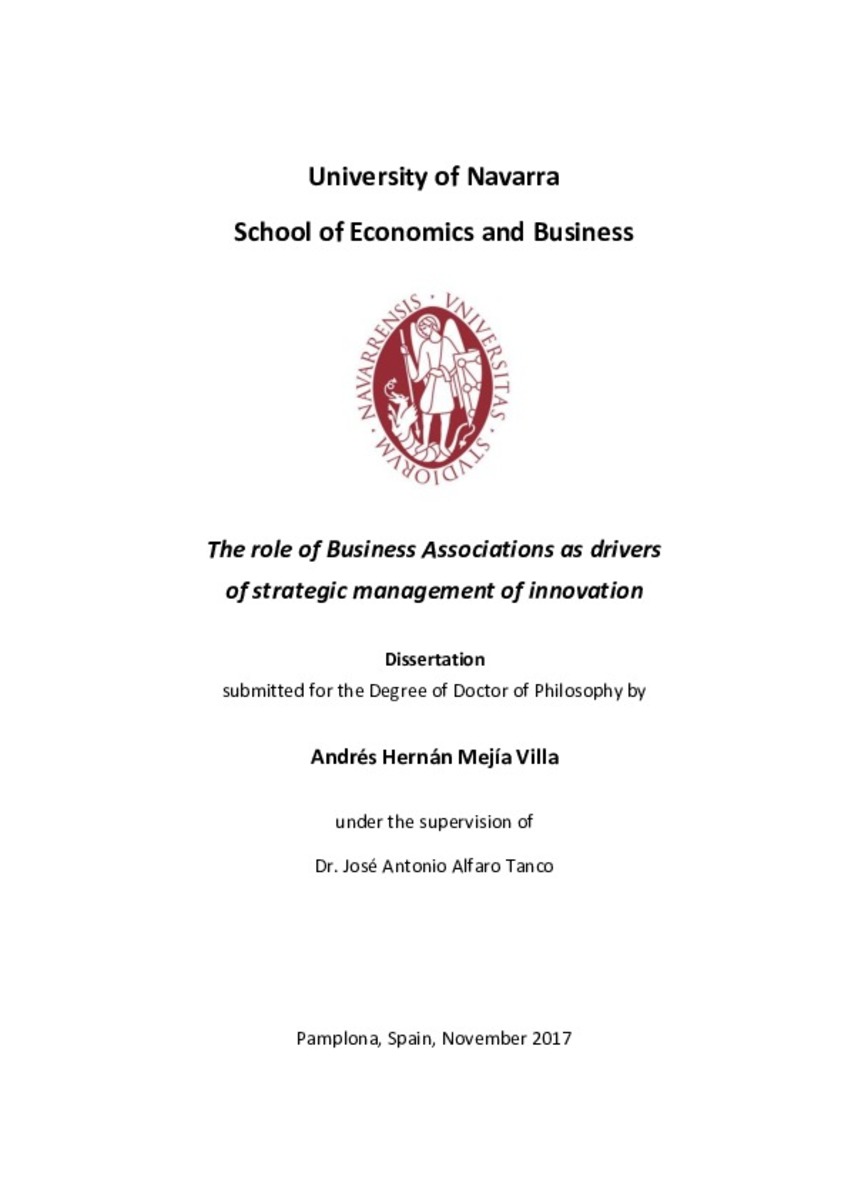The role of Business Associations as drivers of strategic management of innovation
Palabras clave :
Business associations
Innovation
Materias Investigacion::Economía y Empresa
Fecha de publicación :
30-ene-2018
Fecha de la defensa:
15-dic-2017
Cita:
MEJÍA-VILLA, Andrés Hernán. "The role of Business Associations as drivers of strategic management of innovation". Alfaro Tanco, J.A. (dir.). Tesis doctoral. Universidad de Navarra, Pamplona, 2017.
Aparece en las colecciones:
Estadísticas e impacto
0 citas en

0 citas en

Los ítems de Dadun están protegidos por copyright, con todos los derechos reservados, a menos que se indique lo contrario.







